insect arthropods
1/47
There's no tags or description
Looks like no tags are added yet.
Name | Mastery | Learn | Test | Matching | Spaced |
|---|
No study sessions yet.
48 Terms
body parts
three main parts, head thorax and abdomen
thorax
divided into pro, meso and meta
each segment generally has a pair of legs
abdomen
segments differ but would be numbered anterior to posterior
petiole
part of the abdomen but found within the distinction
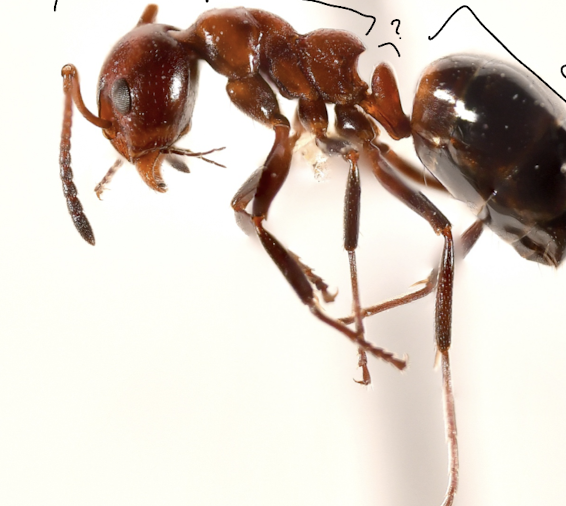
ants
elbowed antennae, petiole
pronotum
shield behind head forming the top of the prothorax
can be essential for ID
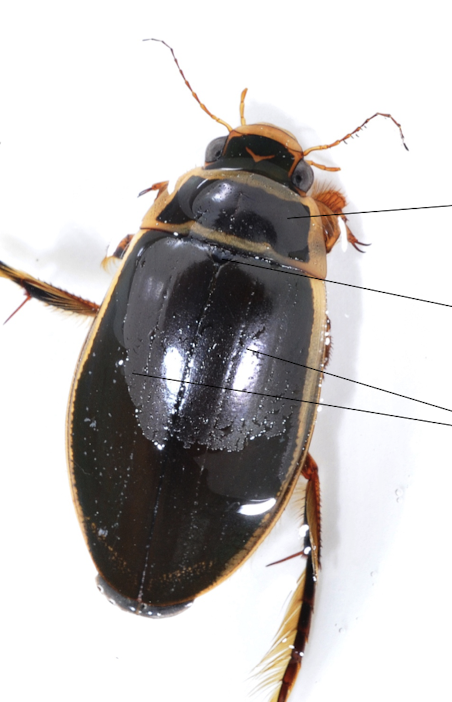
scutellum
triangular plate behind the pronotum
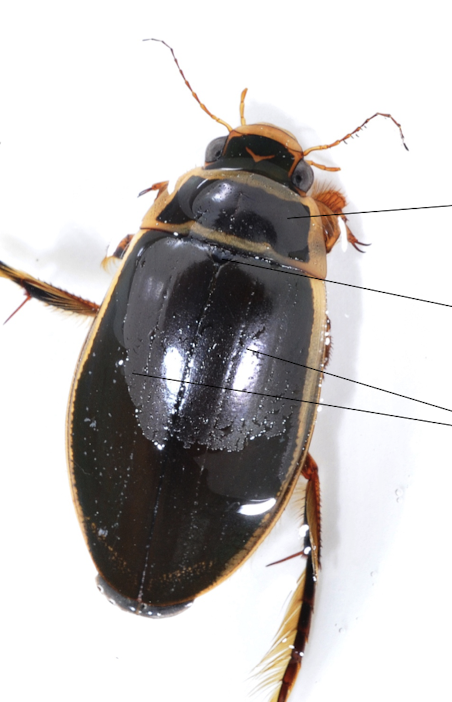
elytra
hardened fore wings
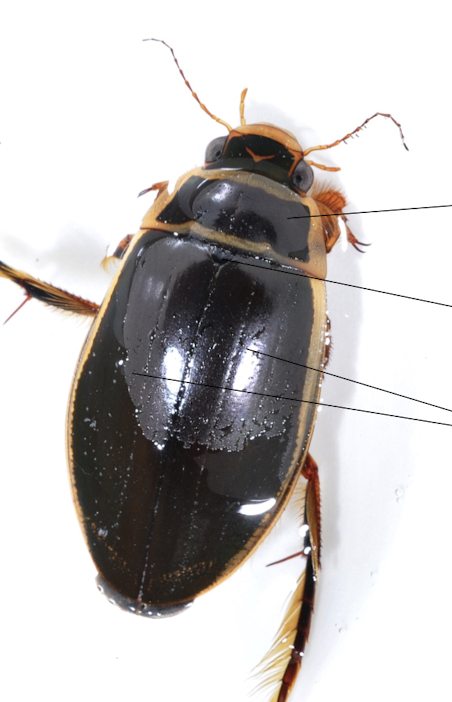
cerci
paired sensory appendages on the posterior abdomen
cilla detect predator air currents from behind, or act as pinchers or for reproductive purposes (clasping ex)\
not in all species
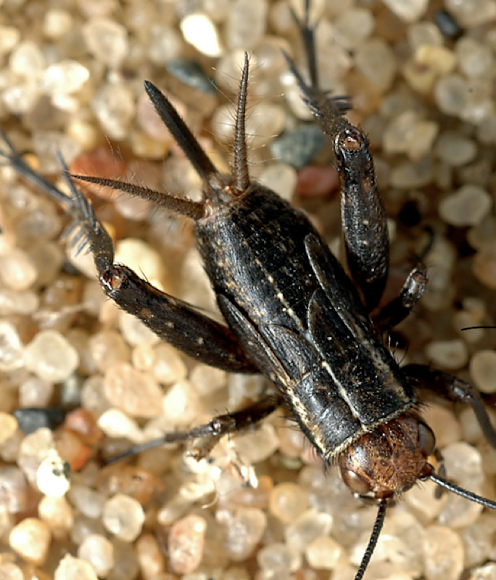
ovipositor
female sexual appendage for depositing eggs
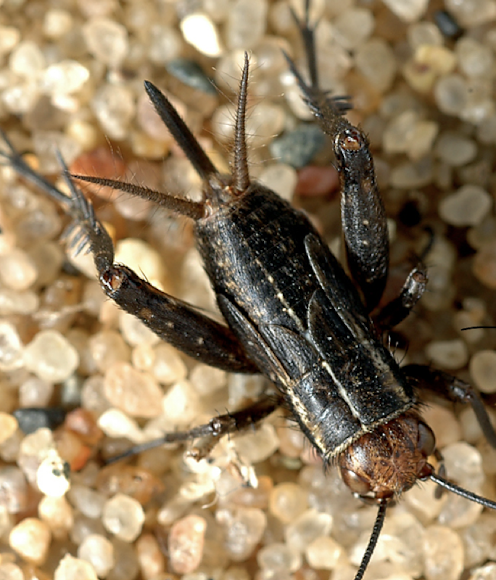
wing pads - immature
wont cover the abdomen
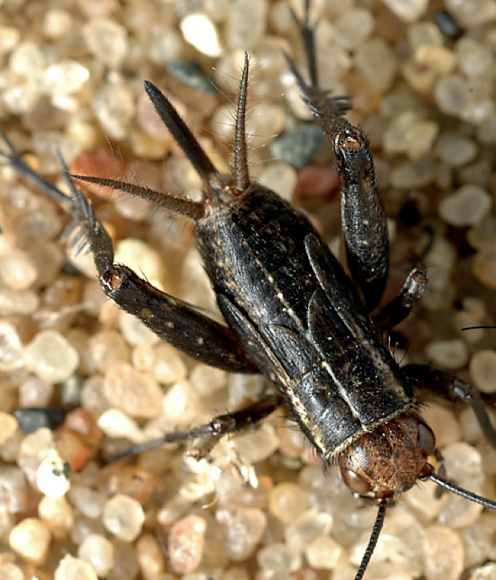
compound eye
large bulging eyes with many lens (up to 1000s)
each lens has its own photoreceptor supporting a mosaic view of surrounding rather than a focussed image
lens on top may be bigger than on bottom
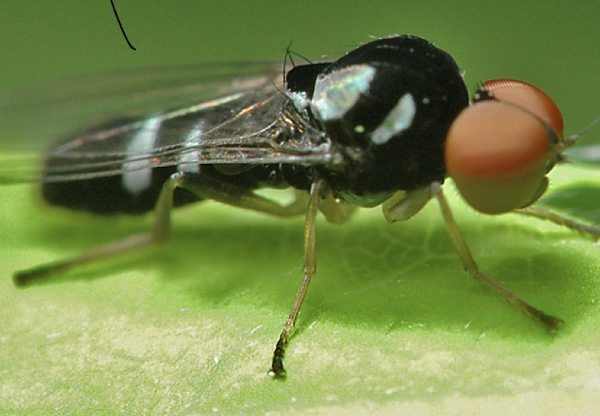
camel cricket
wingless as it lives underground
long antennae for feeling in the dark
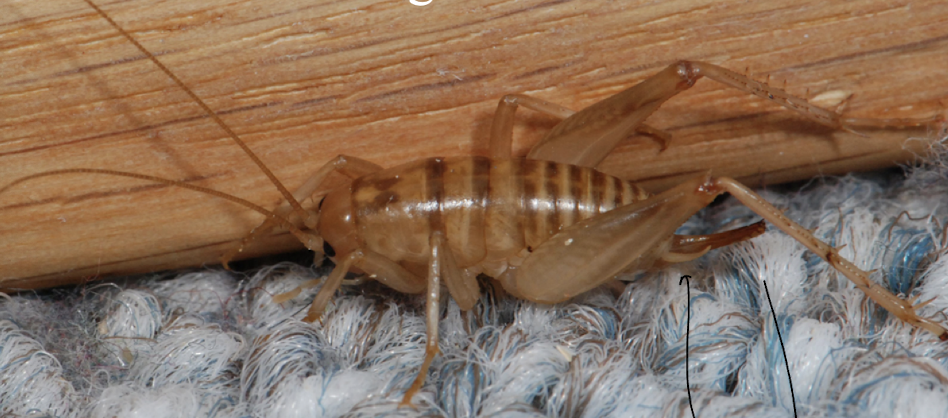
frons
forehead plate
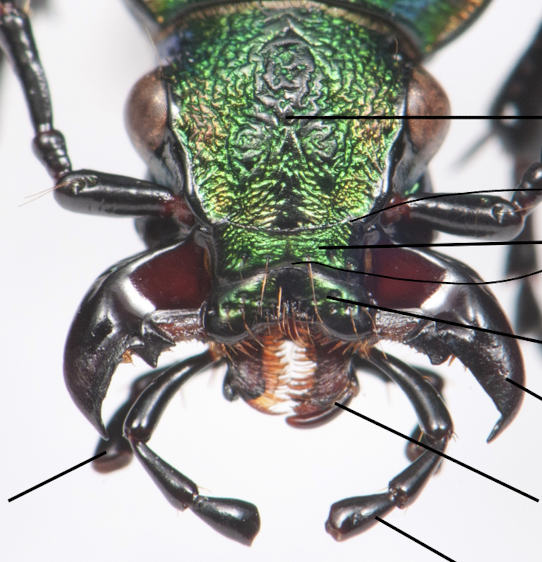
clypeus
another broad plate above the labrum
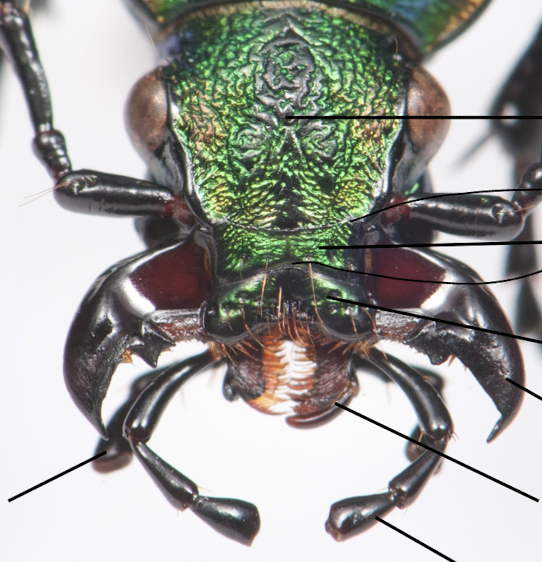
labrum
upper lip
plate-like sclerite that serves as a front lip to help contain the food
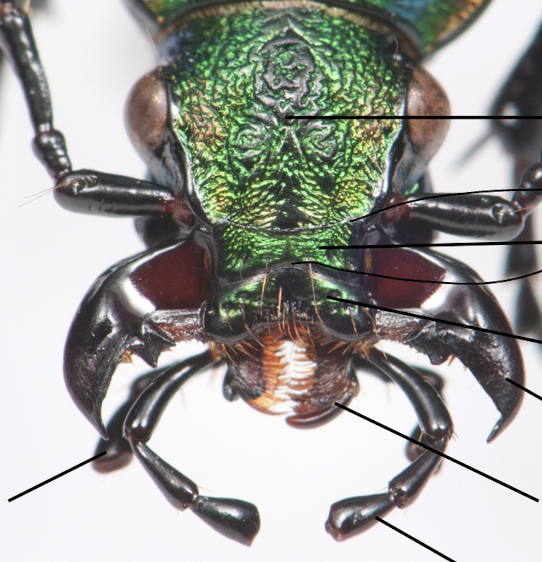
mandible
paired appendages/jaws
side to side movements, chewing/crushing/grinding
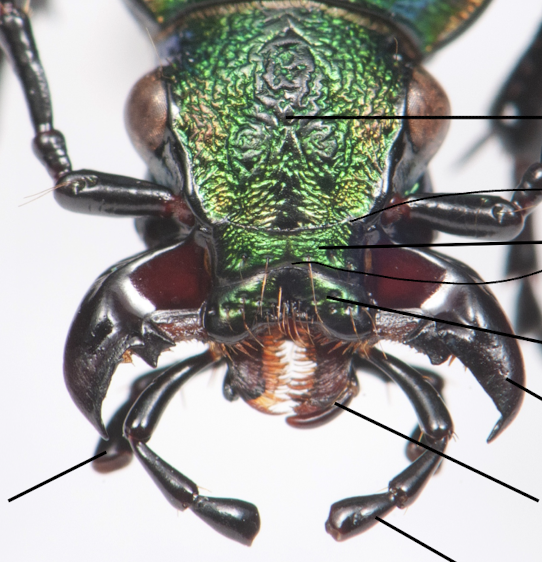
maxilla
paired mouthpart
aids in holding food for other appendages to chew/rip
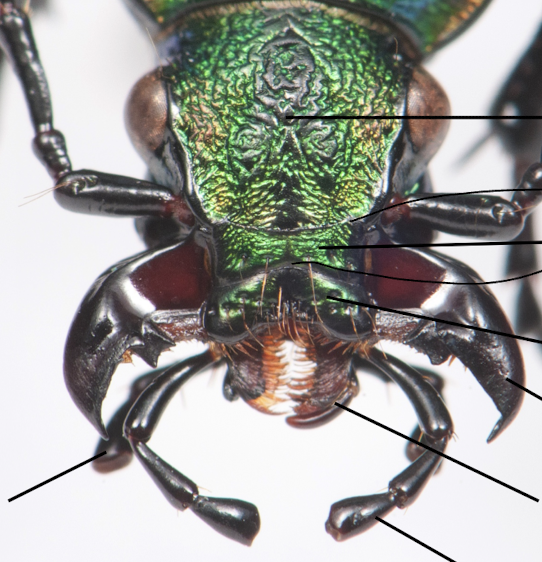
maxillary palp
sensory appendage
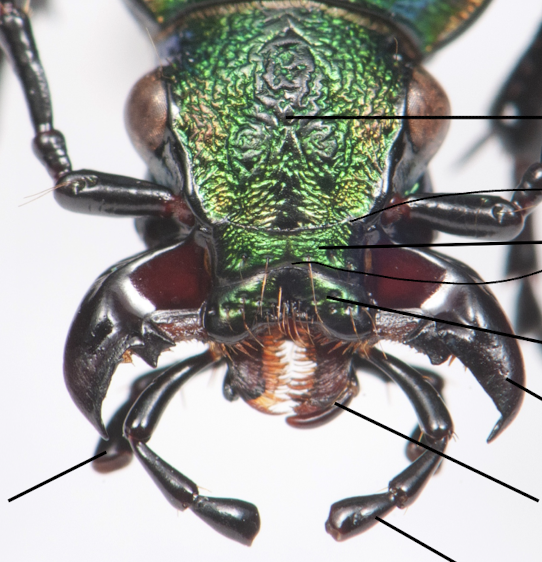
labial palp
also sensory appendage
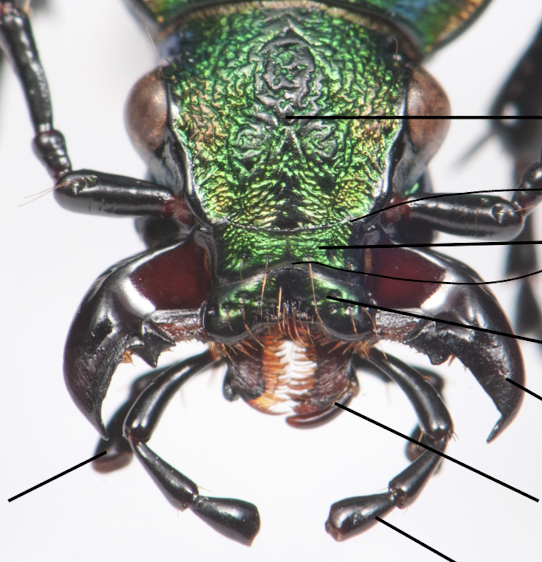
scleritization
after shedding, exoskeleton is soft and vulnerable
it doesn’t dry however, to harden there is a cross linking of proteins
coxa
first leg segment of insects
usually very short/hidden
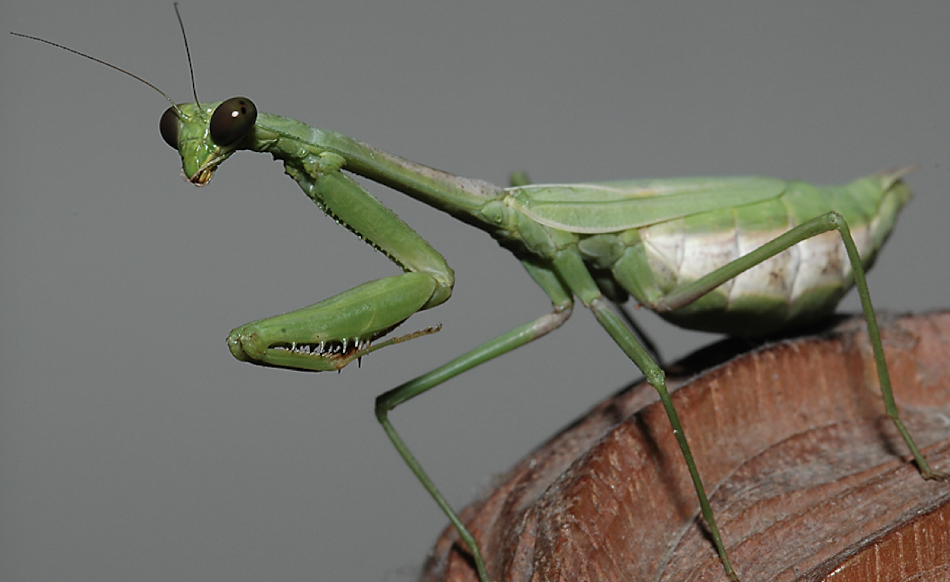
trochanter
elbow like leg segment of insects
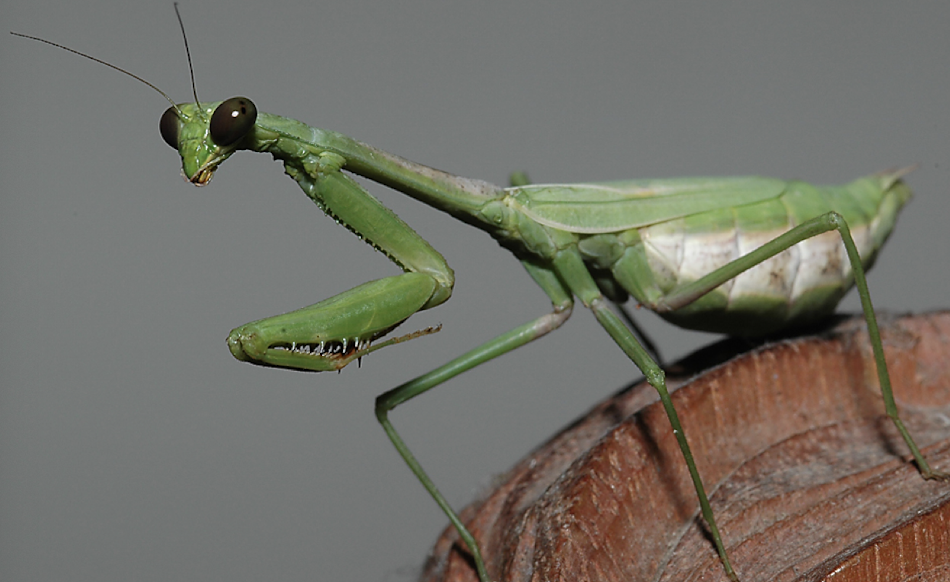
femur
leg segment occuring after the trochanter
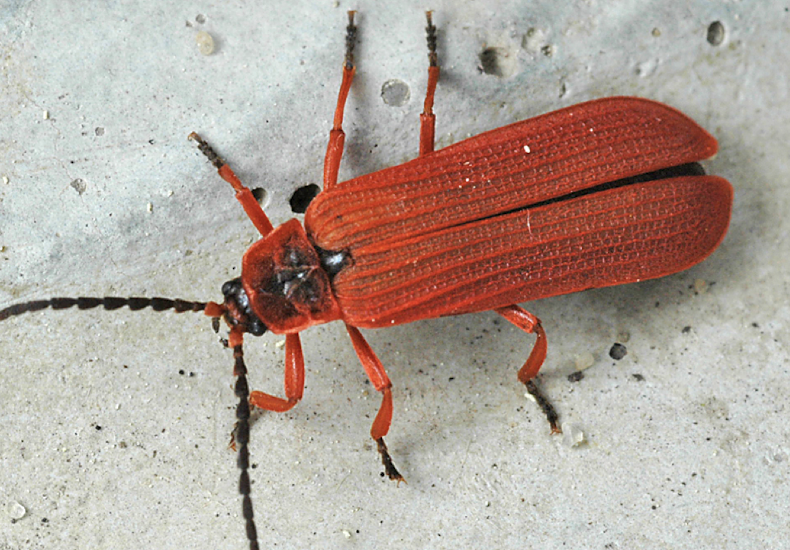
insect leg segments order
coxa, trochanter, femur, tibia, tarsus
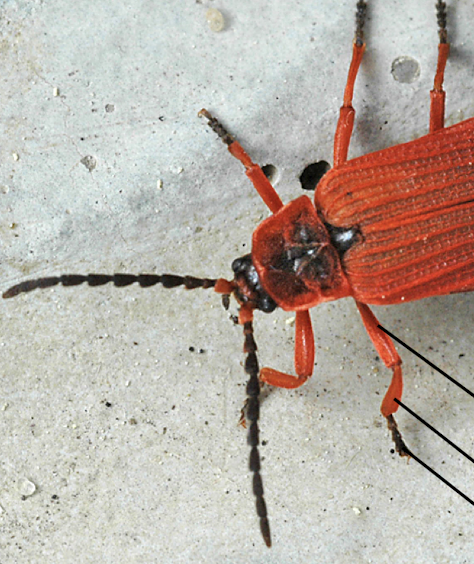
incomplete metamorphosis
no pupal stage, nymph
wing pads
soon to be wings
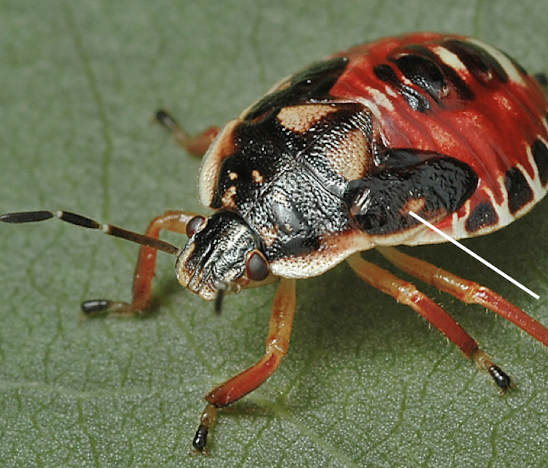
types of mouthparts
imp for ID
sucking, chewing,
aquatic adaptations
ex water boatman
swimming hind legs look like oars, small forelegs
air bubble - plastron
plastron
air bubble found in aquatic species
attaches due to specialized tiny hairs which repel water
how they breath! needs to be replenished
proboscis
mouthpart in butterflies which acts like a straw
can be coiled or uncoiled
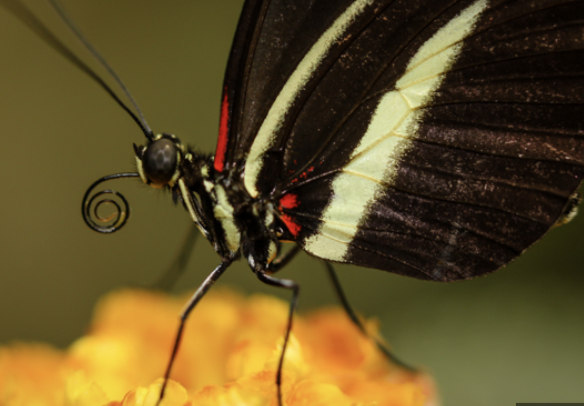
butterflies
proboscis
sometimes only have 4 legs
sometimes hibernate
membranous wings
contain wing veins
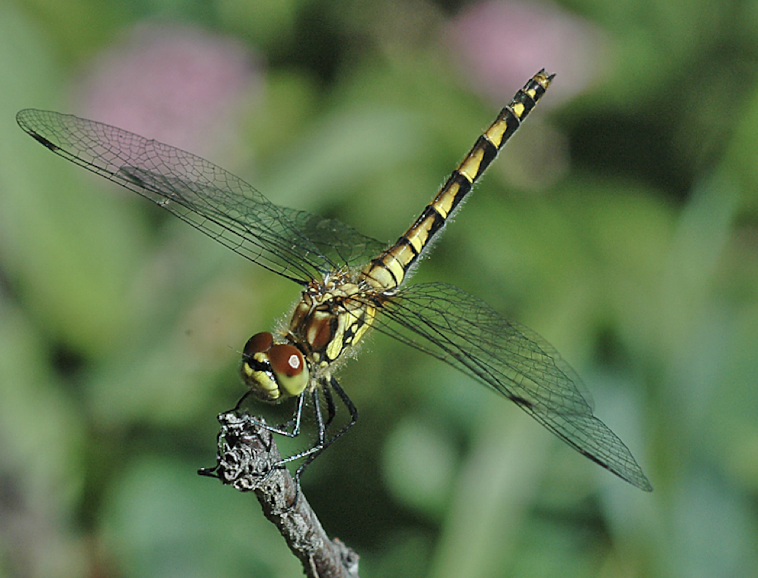
where do wings attach?
in insects ONLY on mesothorax and metathorax
never abdomen, or prothorax
setae
modified scales which cover butterfly wings
not needed for flight
butterflies and UV light
see combination of normal and UV light
females are sensitive to UV on males
fly
only one pair of wings, halteres, short antennae generally
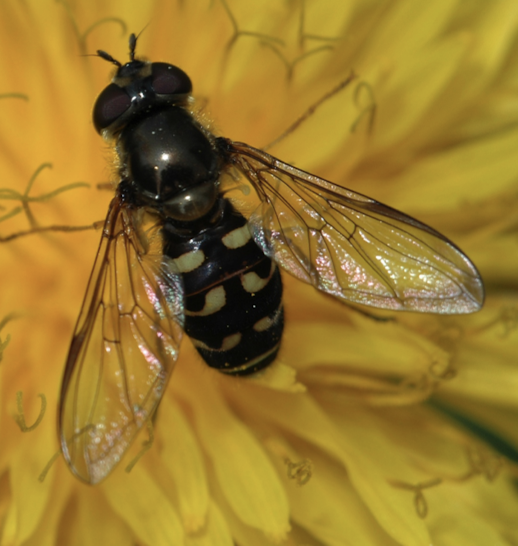
halteres
reduced wings used for balance or orientation in space in flight
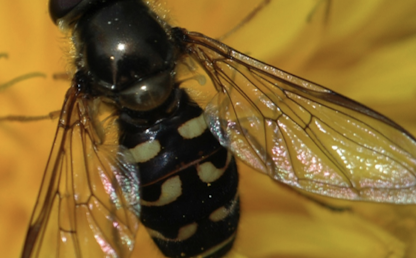
snow crane fly
can be winter active
no wings, but still have halteres
bc warmer at ground level so best to stay there
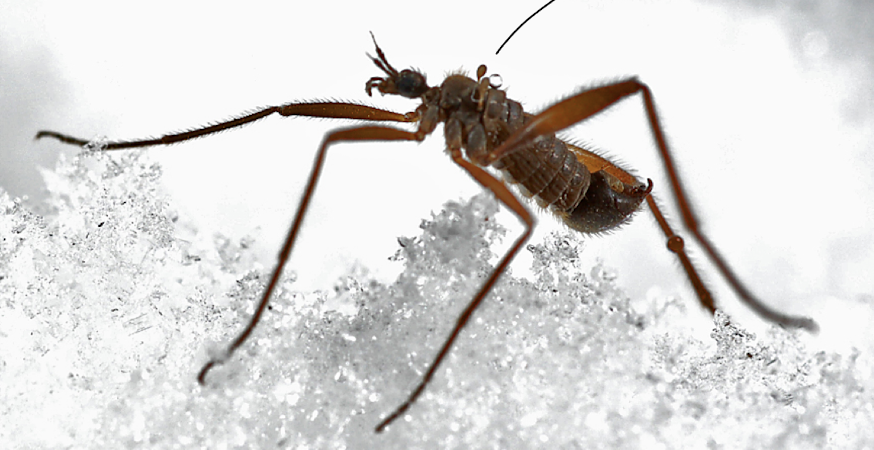
robber fly
like many flies, mimics a bee
most predators dont want to eat bees (sting) and most bees wont bother others
this is a predator and so it can also trick its prey
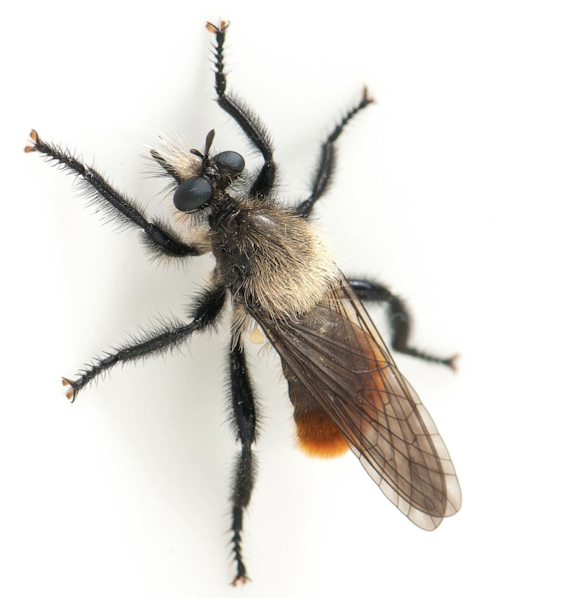
alder adelgids
sucking buds which cover themselves by a waxy secretion
allows escape from predators
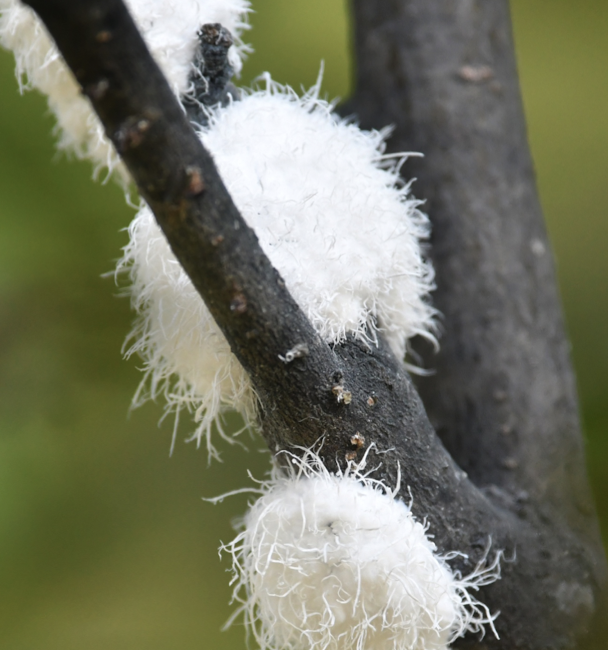
tortoise beetles
can completely protect their legs and antennae from ant attacks as they have shield like elytra and pronotum to cover
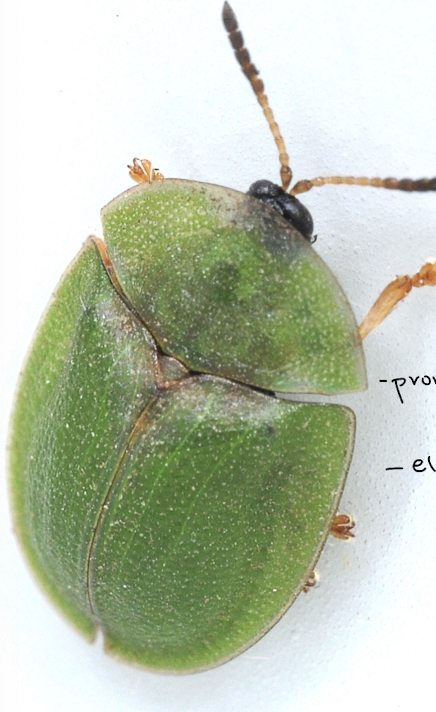
beetles colour
bright iridescent structural colours - not totally sure why
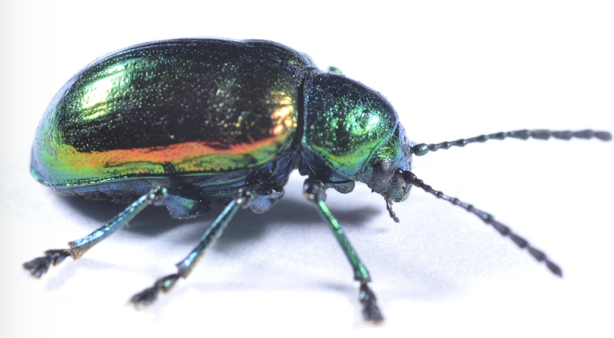
cuckoo wasp
lays eggs in nests of solitary bees and wasps
brood parasitism is common in insects
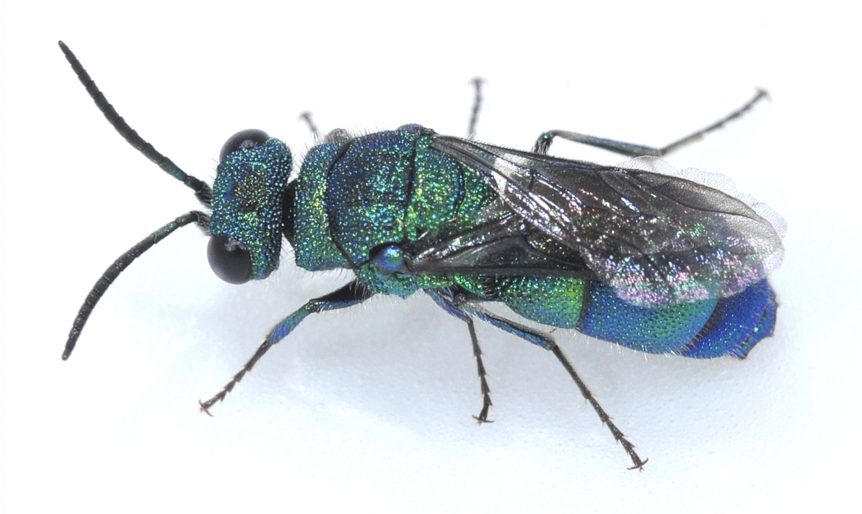
luna moths
recently entered ab from the east due to warming climate
potentially the long wings makes it harder for bats to track w echolocation?
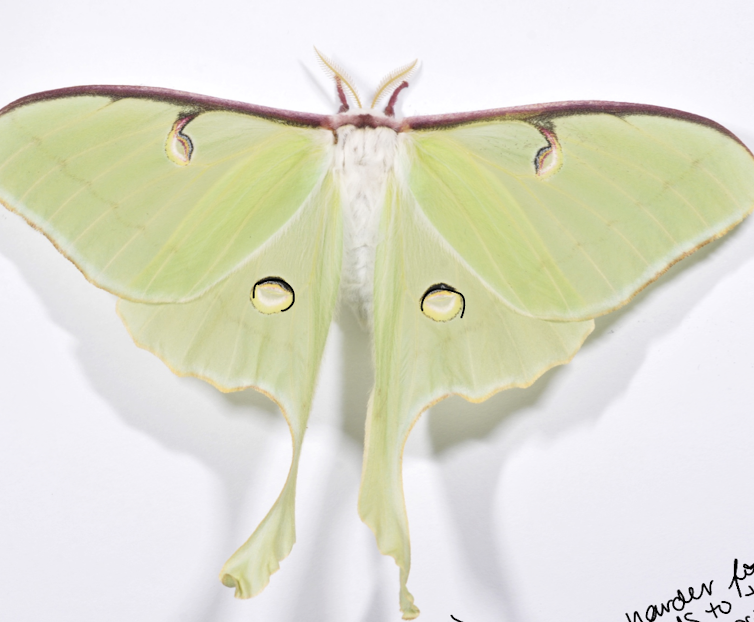
moth morphology
many have disrupted outlines to look like dead leaves
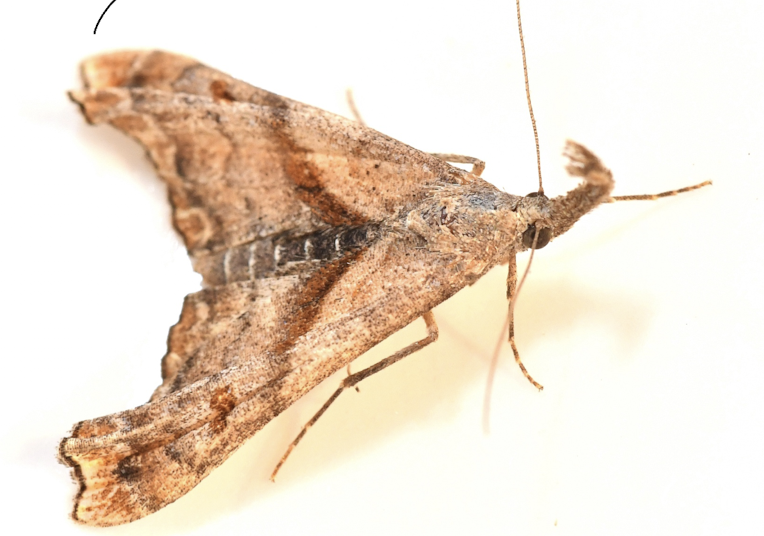
ambush bugs
predatory bugs who are camoflauged to await their prey in flowers
grasping appendages
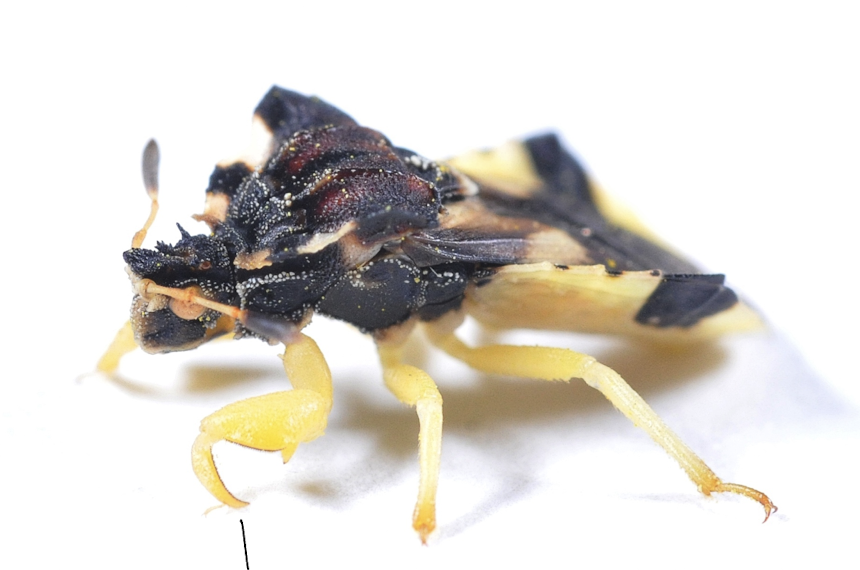
water scorpion
awaits their prey under water